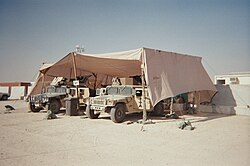This article needs additional citations for verification .(April 2023) |
A rapid reaction force / rapid response force (RRF), quick reaction force / quick response force (QRF), immediate reaction force (IRF), rapid deployment force (RDF), or quick maneuver force (QMF) is a military unit capable of responding to emergencies in a very short time frame.
